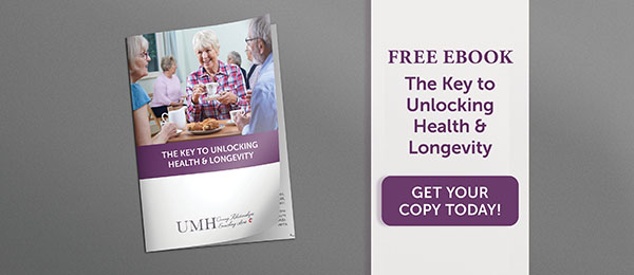8 Must-Take Steps for Touring Assisted Living Communities
assisted living | Senior Living Communities CT | senior caregiving | senior health | senior health tips | memory care | alzheimer's care | healthy living | independent living in ct | memory loss
Searching for the right assisted living community for your loved one can feel like climbing a mountain, especially if you’re new to the process. It’s an important decision, and one you’re unlikely to take lightly, as the community you choose will have a major impact on your loved one’s health, happiness, and financial outlook. Deciphering what differs one community from another and making essential considerations around issues like budget and value require a well-planned approach.
To help support your process of evaluating and touring various assisted living communities so you can find the right fit, the following are eight critical steps to take. These steps offer the opportunity to maximize your time, gather as much information as possible, focus on essential areas, and ask valuable questions.
1. Evaluate your loved one’s current situation and look to the future.
The very first step happens before you visit any assisted living property, and it involves assessing current and future needs and realities. You want to get very clear on exactly how much care your loved one requires, what’s most important to them in a living environment, and what their budget looks like.
With the aging process, specialized care needs usually broaden. So be sure to determine whether your loved one requires help managing medications or assistance with daily activities like bathing and getting dressed. Can they move around comfortably on their own, as well as cook and clean independently, or do they require assistance in these areas? Is dementia or another memory impairment present?
You also need to calculate their current financial situation, aggregating their monthly income versus living expenses (housing, maintenance, utilities, meals, etc.). How much are they currently spending each month, and are they living comfortably on that budget? What can they afford to pay for an assisted living community, and what financial assistance might help offset the cost? Research what options are available so you can factor them into the overall budget.
Finally, think about the future needs of your loved one. If they have a degenerative disease, for example, you’ll want to consider what they’ll need as the disease worsens. Will they require a community that accommodates such needs, and will they have the ability to age in place? It’s usually best to move as few times as possible, so keep this in mind as you head into your search.
2. Contact assisted living communities in your desired location.
Next, it’s time to start reaching out to communities in your area. Find ones you would like to learn more about and contact their senior care counselors to access information and ask any specific questions you may have. These counselors should be willing and able to have a discussion, provide thorough answers and walk you through the process.
After speaking with these representatives, schedule a tour of the communities you are interested in seeing firsthand. There’s no better way to evaluate a community than to see it in person, and to give your loved one the opportunity to do the same.
3. Inquire about the community’s mission and background.
When visiting each assisted living community for the first time, there will be lots of areas to focus on. One of the first elements you’ll want to dig into is the community’s mission and background, including details such as whether it maintains a for-profit or not-for-profit status, how long it has been serving the population, its operational philosophy, and the ratio and longevity of staff.
Ask about essential figures and their tenures, like the Executive Director/Administrator and the Resident Care Director/Nurse, and inquire about background checks and training for staff and volunteers. Find out whether they practice a relationship-centered approach to caregiving and have an abundance of opportunities for social connection, and get an overall sense of your own gut feeling from interactions with residents and staff on site.
4. Get a feel for the physical setting.
As you walk around the community, imagine what it would be like for your loved one to live in that building and move about the property. Are there long hallways? Would they be able to find their way around, or is the layout confusing? Be sure to check if spaces are designed to accommodate walkers and wheelchairs.
And remember that there’s more to the setting than their personal living quarters. Many residents spend a lot of their time in the community areas, participating in activities and enjoying meals together. So navigate these spaces as well, and think about what life there would feel like. Are the common areas clean and odor-free? Is there a long walk from their room or apartment? Is the staff visible and available to residents throughout? Is there a safe and accessible outdoor area? Notice whether common areas are populated with residents or if most people keep to their own living spaces.
Also think about safety and security nuances like bathrooms with accessible showers, built-in benches, and grab bars, as well as emergency pull-cords in the apartment, and systems for securing the property 24/7.
5. Check out the activities and transportation options.
What programs, trips, and opportunities for socialization are offered in the community? Plenty of seniors enjoy participating in meaningful activities and events, watching sports teams, and spending time with friends and family. Offerings should be designed to meet not just the physical needs of your loved one, but also the intellectual, emotional, social, spiritual, and vocational ones. It is important to ensure that your loved one will have access to the things that are important to them in order to make their living experience a positive one.
If your loved one wishes to stay involved with their church or other organizations, make sure that the assisted living community has adequate transportation to surrounding areas. Is there a fee attached to the service, or is it included in the price? Some communities even offer to host these types of groups on-site for residents’ convenience.
6. Assess the community’s approach to health and wellness.
When it comes to assisted living, health services are usually high on the list of must-haves. You want to make sure that health and medical attention are highly prioritized, from daily care assistance and medication management to available escorts, access to geriatric clinicians, programs for physical and occupational therapy, and ongoing safety checks.
Ask about services such as on-site medical clinics and readily accessible transportation for medical appointments. See what programs are in place to emphasize the importance of health and wellness, and find out whether healthcare services are provided by an outside agency or in-house staff. Are nursing aides on site 24 hours a day? And which health and wellness services are included in the monthly pricing versus charged at an additional cost?
7. Witness the dining, services, and amenities.
The dining experience is often integral for residents to build and maintain relationships, as meal times are when seniors come together to talk and share stories with one another. It can be an opportunity to socialize with neighbors and make friends, as well as stay on top of nutritional needs and dietary restrictions.
Check out the dining environment within the assisted living community and determine how conducive it is for conversation and companionship. Make sure you find out how many meals and snacks are offered (and at what cost) and if residents have the option to dine together when they desire. The type and variety of food served is also important. Confirm whether your loved one will have access to healthy and delicious food that meets their dietary needs.
In addition, see what services and amenities are available and which ones are included in the monthly rent. Every community includes different offerings so be sure to hash out these details.
Examples of services you may want to ask about include housekeeping, maintenance, personal or community laundry, and beauty services. You might also inquire as to their pet policy if that is a concern for your loved one.
8. Compare your options and arrange a trial stay.
Once you’ve had a chance to experience different assisted living communities, examine all the areas outlined above, get your questions answered, and come away with a general feeling of the people and places, it’s time to compile the information you’ve gathered and compare your options. Which community is the best choice both personally and financially for your loved one? Approach this process carefully and think about which one provides the best care and value for the price.
One of the best ways to ensure you’re making the right decision is through a trial stay. This gives your loved one the opportunity to reside in the assisted living community for a few weeks and see if it feels like the right fit. It’s a smart step toward getting the full picture and making an informed decision. Ask your community of interest if they offer a trial stay, and if not, what other ways your loved one can experience the community firsthand without having to make a long-term commitment.
For additional tips on senior health and lifestyle issues, check out our blog. To find out how United Methodist Homes provides a wealth of offerings and opportunities to support the health and wellbeing of our residents, contact us today or schedule a complimentary visit now.
About Elizabeth Bemis
In 1998, I drove past an assisted living community construction site, learned that it was part of United Methodist Homes and realized the next stop on my professional journey was to work for a mission driven organization. Soon after, I joined the team as Executive Director of our Middlewoods of Farmington community and later served as Regional Manager for the Middlewoods properties before accepting my current role as Vice President of Marketing, Promotions, and Assisted Living Operations. I enjoy spending time with my family, cooking, reading, walking, and love working alongside our staff, residents, and families to build strong communities that reflect the mission, vision, and values of United Methodist Homes.

Our Blog is a 2016 Platinum Generations Award Winner! The Generations Award is an annual international competition for excellence in senior marketing recognizing professionals who have communicated to the 50+ Mature Markets.





